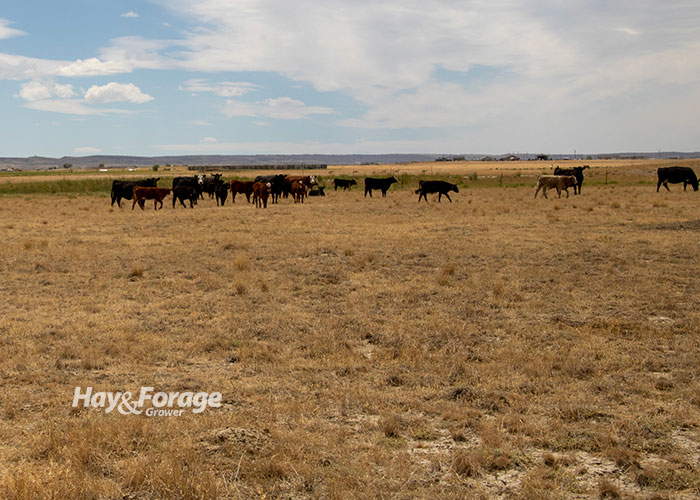
Drought management is an ongoing process that doesn’t have a definite start or end. Drought plans are necessary to prepare before a period of dry weather, and modified grazing techniques are key to ensure adequate pasture recovery during a drought. Oftentimes, these phases of planning and recovery overlap.
Although dry weather was an inevitable aspect of production in many parts of the country this year, the trend of hot temperatures and low moisture may be on the tail end. Therefore, now is the time to assess grazing systems and identify areas where management can improve if drought occurs again.
Daren Redfearn with University of Nebraska-Lincoln Extension suggests understanding what happens to plants during a drought will help guide stand assessments. The forage and crop residue specialist notes that drought rarely kills well-managed plants, but overgrazing can prolong pasture recovery and stand persistence.
One reason for this is weakened forage root systems. When drought conditions are coupled with disturbances like grazing or overgrazing, plants have less energy to allocate to root growth and development. As a result, forage root systems are restricted to shallow depths in the soil and cannot reach water that may be deeper in the profile.
“Forage productivity can drastically decrease during a drought in shallow-rooted plants, which are affected sooner and to a greater extent than more deeply rooted plants,” Redfearn states.
Weakened root systems not only affect a plant’s ability to withstand dry weather in the current growing season, but also in seasons to come. Redfearn says past grazing practices determine the degree to which plants will experience damage during future droughts. The most noticeable sign of drought damage, and thus, weakened root systems, is lower crop yields.
With that said, Redfearn points out that forages that recently endured a drought are likely in better condition than they appear. Drought damage may be even less of a concern if pastures were managed responsibly before and during the dry weather. Nonetheless, these plants need time to replenish their energy stores and strengthen their root systems in order to support another grazing season next spring.
“In many cases, these pastures recover quickly from drought,” Redfearn concludes. “The key elements, of course, are rain and rest.”

Amber Friedrichsen served as the 2021 and 2022 Hay & Forage Grower summer editorial intern. She currently attends Iowa State University where she is majoring in agricultural communications and agronomy.

